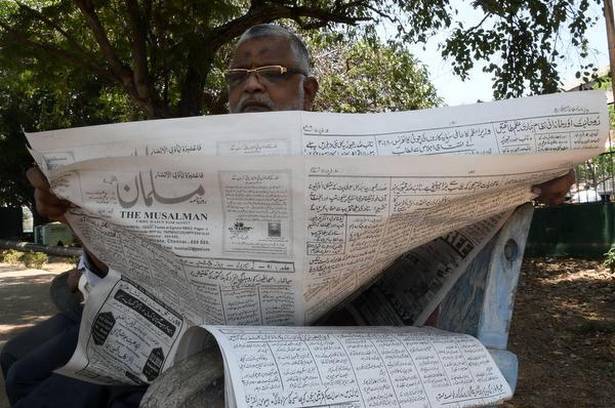Musalman: The World's only hand written newspaper is 91 now
Shares

ISLAMABAD - Reed pens, ink bottles, stacks of papers — these are the first things you notice when you step into the computer-less office of *The Musalman. *Aged a venerable 91, what is possibly the world’s only handwritten newspaper (and the only one without a computer) shows no signs of signing off.
In its office in Chennai, a dark green visiting card bears the newspaper’s name and that of its editor, Sayed Arifullah, and lists the 13 degrees he holds.
Arifullah, in his mid-30s with a salt-and-pepper beard, exudes a casual confidence. He has been at the helm for nearly 10 years now.
*The Musalman*, established in 1927, was started by Syed Azathulla, Arifullah’s grandfather, because “he felt there was no voice for Muslims and there should be one.” Located in a small lane next to Chennai’s iconic Wallajah Mosque, the office is a tight space with two rooms, one housing the press and the other acting as reception area. “We are renovating, hence the bustle,” he says.
Since its inception, the newspaper has seen three editors: Azathulla, his son Syed Fazlullah and now, Arifullah. When I ask if he had always planned to take over the reins from his father, he shrugs. “It was important that the newspaper be kept running and so I chose to do it. I edit, I write, and I run the paper now.”
Almost all the articles in the four-page broadsheet are selected by Arifullah himself. He says he has reporters in different parts of the country, but the newspaper, much like *The Economist*, does not carry bylines. Around 10 every morning, two translators come in and set out the news in Urdu. In the next two hours, the paper’s three calligraphers, called *katibs*, painstakingly write out each news item on to the broadsheet using calligraphy pens in a Harry Potter-esque manner.
The calligraphy is really the soul of the paper. But with the advent of technology, the *katibs, *earlier employed in newspapers and Urdu publishing houses, have become redundant. The Industrial Training Institute in Srinagar, one of the last government institutes where Urdu calligraphy was taught, wound up the course last May because of no takers.
Finding skilled scribes is a challenge, Arifullah acknowledges, but he is quick to add that he isn’t looking yet. His scribes have been with the paper for the past 30 years. “At that time, my father conducted calligraphy tests, analysed their handwriting, and hired them. They have remained with us all these years — we’re like a family,” he says.
Once the laborious scripting is done, the advertisements are added and the paper is set to the negative. It goes to print around 1 p.m. and reaches most of its 21,000 readers by the evening. And it costs 75 paise. “It’s the cheapest paper in the country!” Arifulla quips dryly, his income coming from the press and not the paper.
